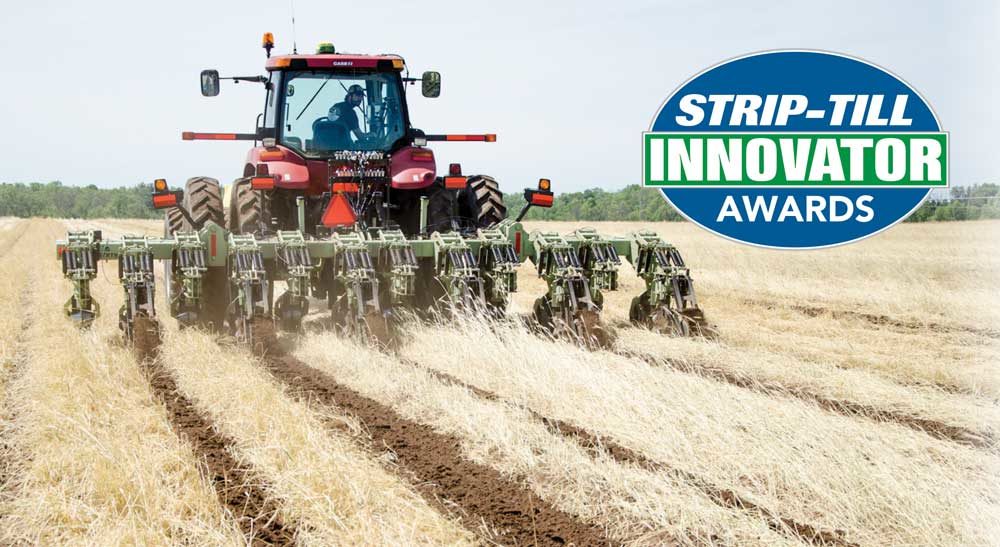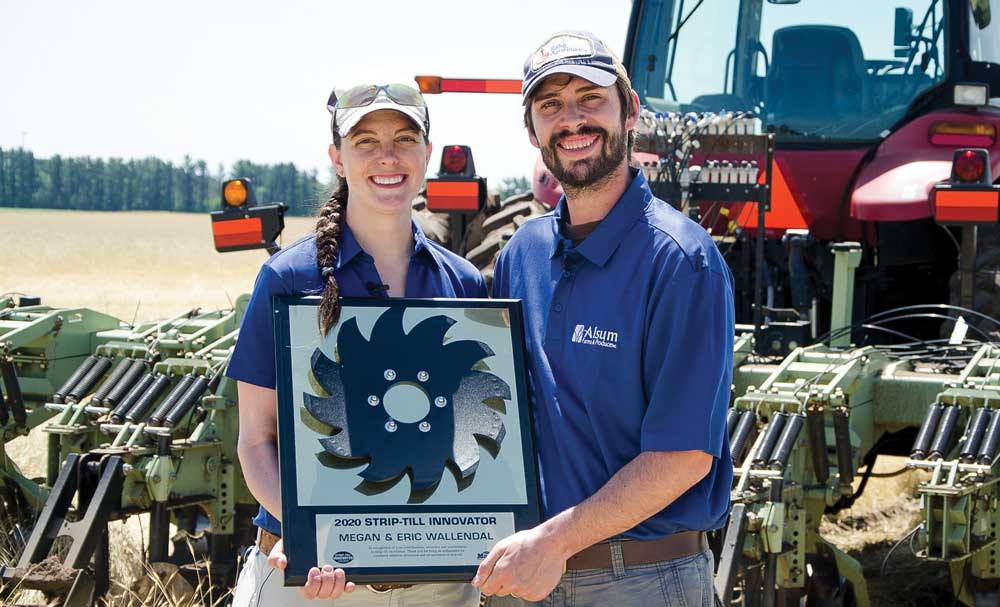No-Till Farmer
Get full access NOW to the most comprehensive, powerful and easy-to-use online resource for no-tillage practices. Just one good idea will pay for your subscription hundreds of times over.

The phrase “change is constant” is an appropriate one to summarize the ever-evolving strip-till operation that Megan Wallendal and her husband, Eric, manage at Alsum Farms, in Grand Marsh, Wis.
Through innovative experimentation, calculated risk-taking and a willingness to share both the successes and failures, the Wallendals view their strip-till system as an evolving laboratory rather than a stagnant cropping operation.
After nearly a decade of strip-tilling a variety of crops full-time, the third generation farmers still view their system as a work-in progress, but a progressive one for which they are recognized as the Strip-Till Farmer 2020 Strip-Till Innovators.
Farming in primarily sandy topsoil with heavy clay underneath, preserving water and fertilizer has long been a challenge for the Wallendals. With static organic matter content between 0.7-1% they adopted strip-till and other practices to help preserve soil health and increase crop yields.
“With our low water-holding capacity soils, full tillage was always detrimental to our soil health,” Eric says. “We knew there had to be a better way to retain moisture and utilize crop residue and still prepare a proper seedbed to get crops established.”

INNOVATIVE THINKERS. Strip-tilling full-time for almost a decade, Megan and Eric Wallendal have applied both science and skill to their ever-evolving system to include calculating precision farming payback, cover crop trials and managing high-value crops.
Eric’s dad, John, began first experimenting with strip-till in 1985 and the practice was broadly implemented in 2012 on about 3,200 acres. The operation at the…